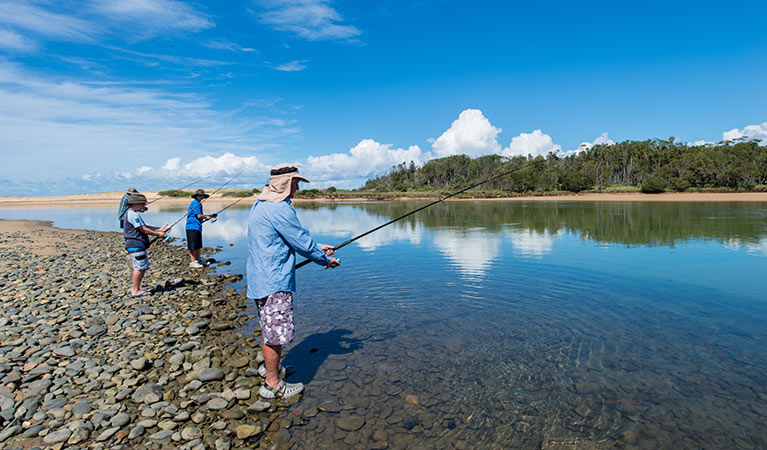Fishing safety
Fishing from a boat, the beach or by the river is a popular activity for many national park visitors. If you’re planning a day out fishing, please stay safe.
Read more about Fishing safety
Plan your trip
- Most of the shoreline in national parks is wild and remote.
- Check if there’s any park alerts or closures before you go.
- Check the tides, swell and weather conditions before setting out and never fish in exposed areas during rough or large seas or in electrical storms.
- You may not have mobile phone reception if you need help.
Tell somebody
Give your trip details to family and friends who are not travelling with you. Tell them when you expect to return and let them know when you have returned. For longer trips or remote areas, consider filling in a trip intention form and taking a satellite phone or personal locator beacon.
What to bring
- Drinking water (2L per person).
- Food and snacks.
- Carry a float and line to help anyone washed in.
- First aid kit.
- Rope and a waterproof torch.
- Recreational fishing licence.
- Mobile phone, satellite phone or radio. Download the Emergency Plus app. Call Triple Zero (000) in the event of an emergency.
What to wear
- Lifejackets for you, children and those helping you fish. They must be suitable for the intended wearer, in good condition and serviced as per manufacturer’s instructions. See more information about finding the right lifejacket.
- Plan for all weather conditions. Be prepared for both cold and windy and hot sunny conditions.
- Sunscreen and sunglasses.
- Insect repellent.
- Lightweight clothing and wet weather gear.
- A hat that fits properly and with a draw-cord so it doesn’t blow away.
- Footwear with non-slip soles or cleats.
When fishing
- Check for hazards and choose a safer place to fish.
- Never fish by yourself and never turn your back on the sea or ocean.
- Always spend time watching the conditions before fishing, and scan for changing conditions. Observe first, fish later.
- Note the location of and access to life buoys where they are present.
- Learn how to swim.
- Plan an escape route in case you're washed in.
- Don't put yourself at risk if someone else is washed into the water.
- If you're in doubt, don’t go out.
Rock fishing laws
Rock fishing is one of the most dangerous sports in Australia. The majority of rock fishing-related deaths in Australia occur in NSW, with an average of 8 people losing their lives in NSW every year.
The Rock Fishing Safety Act 2016 was introduced to save lives. If you’re fishing in the any of the local government declared areas, it is now law to wear a lifejacket. This includes people helping you to fish and any children present.
For more information on the law, standards for lifejacket manufacture, and a map of high risk locations in NSW, see the Water Safety NSW website
